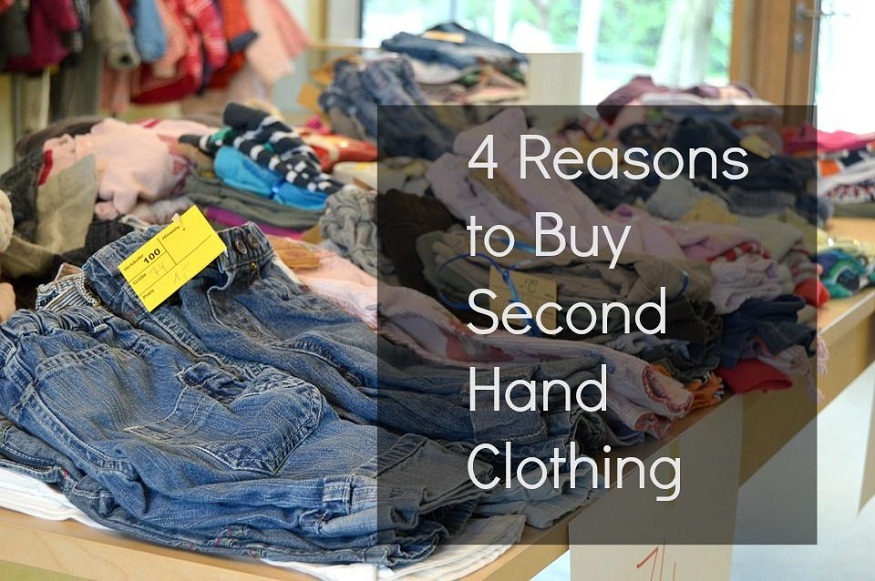
Tips for buying second-hand clothes
For many fashion lovers, buying second-hand clothing is not only a way to find unique pieces or exceptional vintage clothing, but it is also a way to make purchases more sustainable and therefore more respectful. towards the environment. In our article, you will find out how second-hand clothing is resource-efficient and sustainable. We also bring you tips and information on the details to consider when shopping for second-hand clothes.
Two friends discovering vintage clothes in a thrift store.
Summary
Where can I buy second-hand clothes?
What should you watch out for when shopping for second-hand clothes?
Used, vintage or retro: what’s the difference?
Are second-hand clothes really sustainable?
Where can I buy second-hand clothes?
You don’t have to wait until the next flea market to search and find second-hand fashion. There are many ways to buy second hand clothes, whether near you or online .
Online thrift store
You can now find many small and large second-hand clothing dealers on the Internet. From chic coats to quirky sunglasses, as well as from fashion brands to designer pieces, second-hand online stores have it all.
Advantages : Online stores usually have a wide selection. Filtering options, for example by size, color or price, make your search easier. In many cases, the return of clothing is possible.
Cons : The shipping and packaging of second-hand clothes is not always environmentally friendly, even more so if you return the said clothes.
Online platforms and clothing exchanges
Many online platforms and used clothing exchanges allow you to sell your old clothes and buy new ones at the same time.
Advantages : on the classifieds portals or the exchanges, you are in direct contact with the sellers, you can ask questions, negotiate the price or even offer your items in exchange.
Disadvantages : Communication and possible negotiations with sellers require time and a little more patience. Returns or exchanges are generally not possible in private sales, in the situation where the second-hand clothes you have purchased do not fit or please you.
Buy second-hand clothes locally
In the big cities especially, but also in some smaller ones, you will find many second-hand stores. From boutiques specializing in designer clothing to stores offering true vintage fashion, there is almost everything your stylist and tailor soul desires. You can also find what you’re looking for in second-hand bazaars, convenience stores, and flea markets..
What should you watch out for when shopping for second-hand clothes?
Buying second-hand clothes can be an exciting and fun activity. However, some points require more attention to avoid unpleasant surprises . Find some important tips below:
When shopping for second-hand clothing from individuals, feel free to ask lots of questions (e.g. condition, fit, care) or request more photos or videos. Exchanges are often not possible in sales between individuals, so that you avoid possible disappointments.
Wash your new, second-hand clothes before wearing them for the first time. You cannot always be sure that used clothing sold or shipped is clean. If your new used item no longer has a care label , check the material. If you are in doubt or the material is very delicate , professional cleaning can help.
If you want to buy a more expensive branded garment, you should stick to stores that verify and certify the authenticity of the garment . If you are buying privately, be sure to request a receipt as proof of purchase and, if possible, the original packaging.
Used, vintage or retro: what’s the difference?
You can follow vintage fashion blogs and guides to familiarize yourself with popular cuts from decades past . This will make it easier to recognize authentic vintage clothing.
The fabrics used also provide information on the era in which they were created: it was not until the 1960s that the use of synthetic fabrics gained importance.
The labels , if at all still attached to the clothes, are generally old and therefore no longer really meet the current size criteria.
Be skeptical of very low prices : Vintage clothing doesn’t have to be cheap, especially if it’s very old or from sought-after designers. The fact that a seller is not aware of the real value of an authentic garment is usually quite low.
Vintage fashion is irreplaceable… As unique pieces and textiles are “witnesses of time”, it is very important to take care of and preserve them in the best possible way. Therefore, ask the seller how to wash and mend them.
Are second-hand clothes really sustainable?
Buying second-hand clothes is generally seen as a greener alternative to buying new clothes. After all, the clothes you find in a second-hand store have already been produced, transported and sold to a first customer. By giving second-hand clothes a second life , you bring a breath of fresh air to your wardrobe without your new garment sparking another production cycle. Clothes are reused instead of thrown away and resources are saved .
Conclusion
Selling old clothes and buying second-hand clothes is a good way to save money and natural resources. The most sustainable way to do your second-hand shopping is to purchase clothing made from sustainable materials , preferably in local stores and of course, in moderation. Buying second-hand clothes is a great way to find unique pieces that can redefine or accentuate your personal style.


